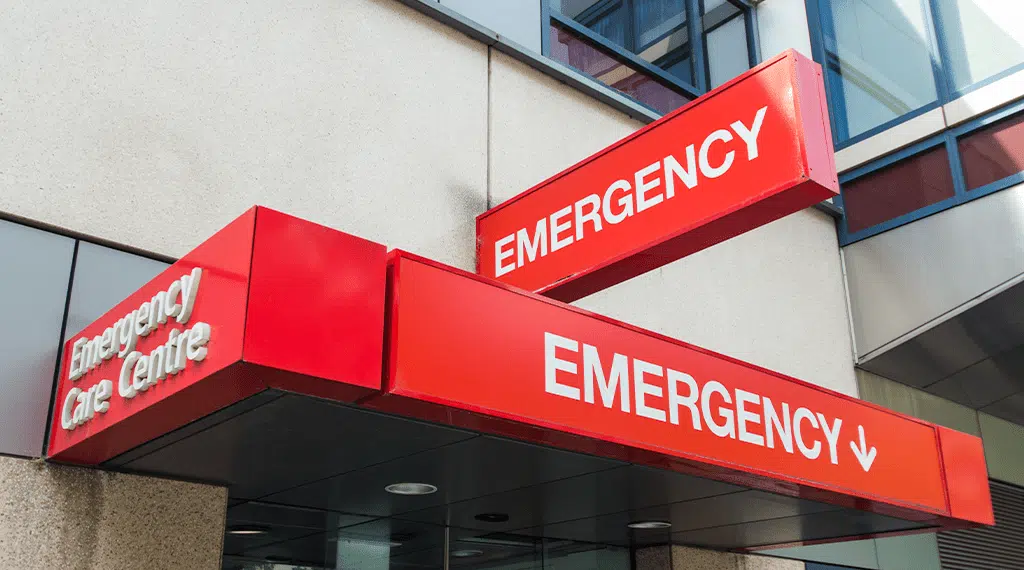The number of mental health treatment providers is increasingly limited across the country. At the same time, the prevalence of adolescent trauma, depression, and anxiety has drastically increased. As a result, ER visits for mental health issues have gone up drastically. When adolescents manifest severe symptoms with little warning, parents are often left with just one option: a teen mental health emergency room visit at their local hospital.
The Rise in Teen Mental Health Emergency Room Visits
A CDC study found that in January 2022, weekly ED visits among teen girls increased for five mental health conditions. These included anxiety; trauma and stress; eating disorders; tic disorders; and obsessive-compulsive disorders. Overall teen mental health emergency room visits also increased. Meanwhile, the number of adolescent residential treatment facilities has fallen by 30 percent since 2012, from 848 to 592.
The new research adds to CDC research done in the past two years. The first found that the proportion of teen ER visits increased by 31 percent in 2020 An update to the report, released in June 2021, examined the data on ER visits for suspected suicide attempts. During one month in 2021, mental health emergency room visits for suspected suicide attempts went up by 51 percent among teen girls. This was compared to the same time period in 2019. For boys aged 12–17, ER visits for suspected suicide attempts increased by 4 percent.
When to Go to the Hospital for Mental Health Issues
“Should I go to the ER for depression or anxiety?” That’s a question parents often ask themselves when their teen’s mental health issues reach a breaking point. And they should trust their gut instincts, says Kristin Wilson, MA, LPC, CCTP, Newport’s Chief Experience Officer. “Ultimately, parents know their kids best and can recognize when something isn’t right,” she says.
If you’re noticing any of these red flags, get help for your teen right away:
- Sleeping excessively or not being able to sleep at all
- Difficulty thinking, concentrating, or speaking coherently
- Auditory or visual hallucinations, including ringing sounds or seeing lights
- Non-responsiveness
- Delusions, including feeling indestructible or superhuman
- Psychosis—detachment from reality
- Self-harm, expressing suicidal thoughts, or a suicide attempt.
What to Ask at the ER and What to Say to Your Teen
Going to the ER for mental health emergencies can be confusing, scary, and disorienting. It can also be easy to forget what you’ve been told in the midst of the crisis. So parents should write down the name of the medical professional who examines their child, and take notes on what has been said.
Here are some questions to ask during a mental health emergency room visit:
- Can the hospital make a follow-up appointment for my child with a mental health provider?
- Is there a social worker or patient advocate at the hospital who can help me access care for my child?
- What are some of the signs I should watch for that could indicate my teen is planning a suicide attempt? (Learn more about this here.)
- Can you recommend community mental health centers or other resources in the area?
A mental health emergency room visit can typically go one of two ways. The family may be told their child is not actively suicidal and can return home. Or the child is admitted to inpatient care because they have made a suicide attempt or are at high risk of doing so.
Whatever happens as a result of going to the ER for mental health, parents should make sure to take the time to have a private conversation with their child. The most important message to give them is that you will work through this together. Remind them that you will always be there for them, and you will make sure they get the care they need to start feeling better.

What Happens After a Mental Health Emergency Room Visit?
When considering where to take someone who is having a mental breakdown, the ER is typically the first option that comes to mind. While it’s the right choice at that point, it’s not a long-term solution. After the immediate danger is alleviated, whatever sent the family to the hospital in the first place still needs to be addressed.
Unfortunately, due to the high number of mental health emergency room visits, many teens end up in what’s known as psychiatric boarding. That means waiting for days in the emergency room area for inpatient beds to open. A recent study of 88 pediatric hospitals around the country found that all but one hospital regularly keeps teens overnight in the ER because there’s nowhere else for them to go.
Even if a teen does get transferred to inpatient care after the ER visit, it’s typically for just a few days. That’s enough time to stabilize a patient. However, it’s not nearly enough time to uncover and heal the reasons they ended up in the emergency room for a mental health crisis. It’s imperative, Kristin says, for families to seek follow-up care after a teen mental health emergency room visit. For teens who were in treatment prior to the ER visit, the crisis may be an indication that they need a higher level of care.
Next Steps After Going to the ER for Mental Health
Having to take a teen to the ER for a mental health concern is frightening for parents as well as their children. In addition, parents sometimes feel guilty and ashamed that they didn’t realize how much their teen was suffering. However, it’s helpful for families to think of this event not as a failure or an isolated instance, but as a necessary part of the healing journey.
After the teen mental health emergency room visit, the real work of recovery begins. Depending on the teen’s specific needs, current situation, and past history, residential or outpatient treatment may be the best next step. The attending physicians or psychiatrists in the ER may have recommended the right level of care. If not, a local community mental health center or outpatient clinic may be able to offer a full assessment and provide care options.
Newport Academy’s Admissions and Clinical Outreach experts specialize in helping families navigate the often complex mental healthcare system. We are here to support families in getting their teen the compassionate and high-quality care they need and deserve. Contact us today to get started.
Sources:
CDC Weekly. 2022 Feb; 71(8): 319–324.
JAMA. 2021; 326(22): 2326–2328.
CDC Weekly. 2021 Jun; 70(24); 888–894.
National Mental Health Services Survey (N-MHSS): 2020






